
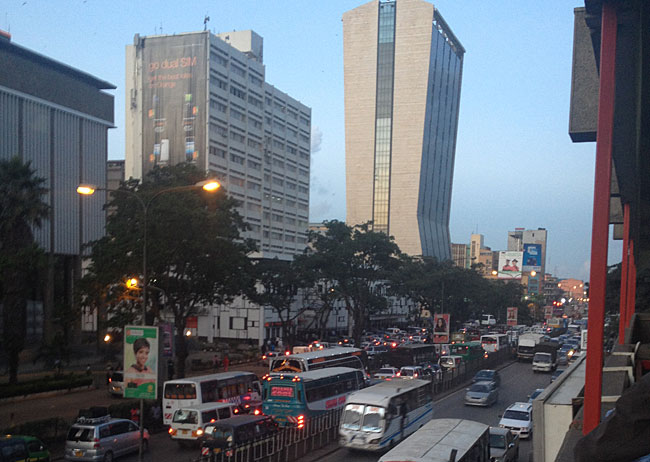
In May the international Placemaking Design Lab, which INTI co-organized together with Placemakers and the IFHP, produced three design proposals, the most promising of which, the strategy of ‘Must Seed,’ was selected for the neighborhood of Dandora. By now, the preparations for the implementation of ‘Must Seed’ have started. The strategy up scales the former successes of improved courtyards to the streets of Dandora. In a participatory process, the streets will be cleaned, street lighting will be installed, pavilions set up, and out-door furniture developed. The implementation will start before the end of this year.
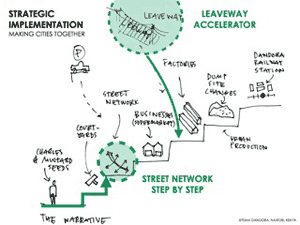
The Design Team Dandora, including the grassroots organization Mustard Seeds and local designers, has already started with the design of the streets. Students of the Technical University of Kenya, the University of Nairobi and other volunteers are mapping the public spaces of the whole neighborhood of Dandora to find other potential places for improvements; private partners like Philips (light), BASCO (paint) and Kenya Power are also involved in the realization of the plans.
The process can be followed on the website and facebook: makingcitiestogether.strikingly.com
Feeding the City is the theme of the knowledge exchange program that INTI has started in cooperation with the Municipality of Almere. While Almere is actively stimulating urban agriculture in the new neighborhood of Oosterwold, cities like Nakuru in the Nairobi region have already organized agriculture in an urban context for a long time.
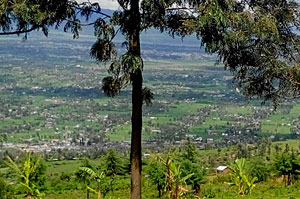
When the mayor of Almere, Annemarie Jorritsma, visited Nairobi in May, INTI organized a meeting with Dutch and Kenyan experts of agriculture and urban planning. A meeting between Jorritsma and the Governor of the Nairobi County, Dr. Kidero, was the start of a process towards an MOU between both cities. We are very pleased that a course on the subject of Feeding the City has been included in the curriculum of the department of Urban and Regional Planning of the Technical University of Kenya. The students of professor Lawrence Esho already started their research on the connection between agriculture and urban planning.
***
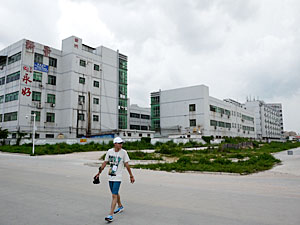
INTI is proud that it has been assigned by Guangming New Town in Shenzhen to set up a multidisciplinary Dutch consultant team to advise the municipal authorities on how to raise the quality of new urban developments and large-scale spatial projects. The collaboration involves at least two workshops and one seminar per year. The team consists of Markus Appenzeller (MLA+ Architecture, Planning and Consultancy), Jasper Hugtenburg (H+N+S Landschapsarchitecten), Christiaan Pfeiffer (City of Almere), Tiffany Tsui (RoyalHaskoning DHV), Leo Versteijlen (SITE urban development) and Linda Vlassenrood (INTI).
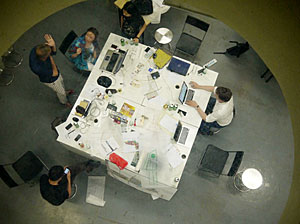
The consultant team started with the so-called “Watch Park”: an industrial site of 1,5 km2 for manufacturing watches. It is a site in need of an upgrade, feasibility strategy and governance model. The consultant team successfully presented an overall framework and practical guidelines for the future development of the Watch Park after an intensive one-week workshop in June with all stakeholders involved. The experts presented an overview of immediate, short-term and long-term actions needed for the upgrade of the Watch Park, including a blue and green framework to meet the low-carbon ambitions.
The municipal authorities were impressed by our dedication and especially by the practicality of the recommendations on how to revise the current land use plan. The Guangming New Town Development and Construction Office will now work on a governance model to implement the advice. A review of their progress will be part of the next workshop in September.
***
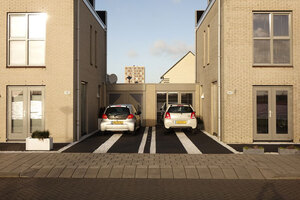
The project De Vinexmensen that started earlier this year is now halfway completed. Last year INTI was asked to organize a group of stakeholders to research the present state and possible future developments of the Vinex-neighborhoods, on the occasion of their 25th birthday. The project is part of a larger program of the Dutch manifestation Jaar van de Ruimte (‘Year of Space”) 2015.
The past half-year was used to research eight neighborhoods: Vathorst (Amersfoort), Leidsche Rijn (Utrecht), Stad van de Zon (Heerhugowaard), Nesselande (Rotterdam), Reeshof (Tilburg), Waalsprong (Nijmegen), IJburg (Amsterdam) and Almere Buiten (Almere). In cooperation with the Universities of Amsterdam en Utrecht, 17 students and researchers investigated the neighborhoods on specific themes. Their research was unprejudiced, critical but first and foremost: curious about this specific type of recent Dutch sub urbanity, their inhabitants and the urban culture that has emerged.
The students wrote blogs (in Dutch) about their experiences (see: www.vinexmensen.nl). In this they have shown to be good heirs of the groundbreaking work of Herbert Gans, who, in his days, was curious too for the features of new urban environment of Levittown. His project, The Levittowners, was the example for The Vinexers.
In addition to the research, the project also organized meetings in every neighborhood with inhabitants, entrepreneurs and representatives of local government. These meetings brought new insights, as well as growing the network of new Vinexers.
On September 3rd there will be a big meeting of De Vinexmensen in the Amsterdam Pakhuis De Zwijger. The results of the research, as well as new views, will be presented and collected to produce an Agenda for the Vinex- Neighborhoods, to be presented at the closing manifestation of the Jaar van de Ruimte, December 2015.
For more information on the Vinexmensen project, the meeting in De Zwijger and the publication please contact JaapJan Berg (project leader) or Saskia Naafs (project assistant) at vinexmensen@newtowninstitute.org or see: www.vinexmensen.nl
***
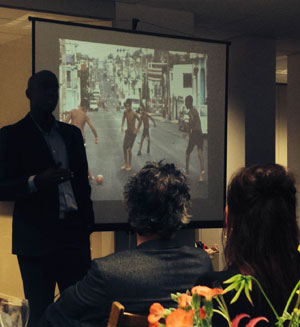
The opening up of Cuba puts a number of urgent spatial issues of the capital Havana in the spotlight. The transformation of the old harbour is one of them and the renewal of Castro’s seventies New Town Alamar, the only plattenbau-city with a beachfront, is another. Also, the new economic prospects raise the question of what will happen to Havana’s world famous urban agriculture. Will it be possible to professionalize the production of food in Havana or will the country retreat to ever more imports as soon as this becomes possible?
The visit of Professor Jorge Peña Díaz to Rotterdam in June, where an expert meeting on these topics was organized in cooperation with AIR Foundation, marked the start of an educational/research program in which both the Technical University of Delft and as the Cuba Polytechnic University José Antonio Echevarria (CUJAE) will participate.
***
The exhibition The Banality of Good. Six Decades of New Towns, Architects, Money and Politics is travelling to Ghana.
The exhibition, developed and designed by Crimson Architectural Historians and INTI, portrays six cities built from scratch. Tema (nowadays part of Accra) is one of them.
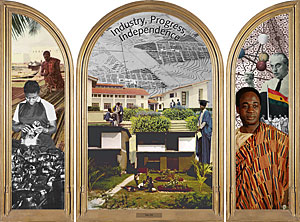
After 50 years, Tema is becoming overcrowded and deteriorated; the city needs to be renovated. But how can this be done without betraying the social ideals of the city and without losing its inclusive qualities? The opening of the exhibition will be used to discuss this theme in a panel discussion with authoritative Ghanaian and Dutch speakers. Also, a design charette will address the spatial and social issues of the future of Tema with a variety of foreign and local experts.
***
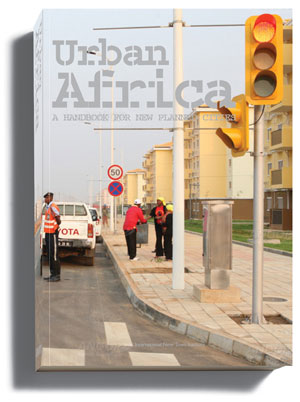
Because of the fast rate of urbanisation in Africa, New Towns are being planned and built all over the continent. Foreign urban models (Western or Asian) proliferate, but these cities often don’t fit the African context. What concepts and strategies can positively assist in developing good cities in African countries? This is the topic of INTI’s latest research project and publication, ‘Urban Africa: A Handbook for New Planned Cities’, in cooperation with UN-Habitat and with support from the Creative Industries Fund.
By examining current African planning practice within its historical, social and political contexts, this book ultimately aims to identify a rough guide for the complex process of constructing a city from scratch—within the challenging and diverse context of the African continent.
By providing flexible recommendations based on extensive research, it hopes to have a positive impact on future urban development. The results of this research will be published by NAi010 Publishers in late 2016 and presented for the first time at the Habitat III conference in Quito, Ecuador.